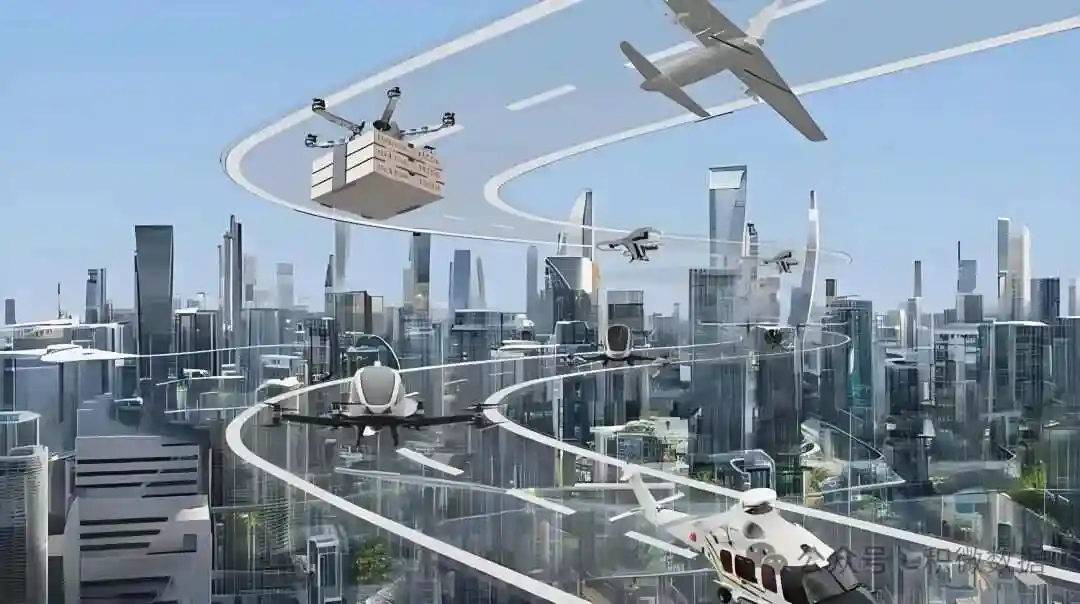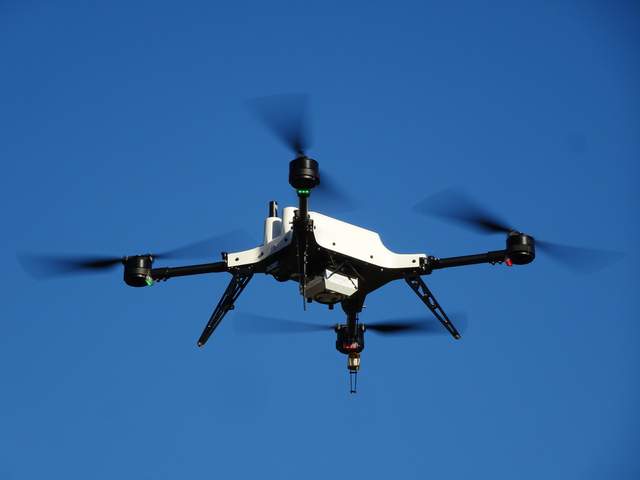
I. Current status of industrial development: driven by both policy dividends and technological breakthroughs
Explosive growth in market size
In 2025, the scale of China's low-altitude economy core industries reached 890 billion yuan, marking a year-on-year increase of 42%. Among them, drone logistics, security, and agricultural applications accounted for over 60%. According to data from the International Drone Conference, the number of drone enterprises worldwide has surpassed 32,000, with China accounting for 43%. Companies such as DJI, Meituan, and EHang have formed a full industrial chain layout.
The policy system is gradually improving
The Civil Aviation Administration has released the "Interim Regulations on the Flight Management of Unmanned Aircraft" (2024 revised edition), which categorizes low-altitude airspace into three types: "open," "restricted," and "controlled." Drones weighing less than 7 kilograms are allowed to fly autonomously in open airspace below 120 meters, and the approval process has been shortened from 72 hours to 10 minutes.
Local pilot breakthroughs: Shenzhen, Chengdu, and other cities have designated "dedicated drone logistics lanes". The Shenzhen Qianhai Free Trade Zone has achieved drone cross-district delivery within 30 minutes, and policy relaxation has accelerated the commercialization process.
Technological innovation blossoms in various fields
Endurance breakthrough: The hydrogen fuel cell drone developed by SF Airlines has an endurance of 480 kilometers, with a payload increased to 15 kilograms, and its efficiency is three times higher than that of traditional lithium battery models;
Cluster control: DJI Matrice 350 RTK supports coordinated operations with a fleet of 100 drones, achieving centimeter-level positioning accuracy, enabling precise delivery of supplies in emergency disaster relief scenarios;
Prevention and control technology: The "Sky Net" anti-drone system launched by China Electronics Technology Group Corporation integrates triple technologies of radar, optoelectronics, and jamming, enabling drone target identification and forced landing within a range of 5 kilometers.
II. Core application scenarios: from commercial implementation to social governance penetration
(1) Logistics and distribution: Reconstructing the urban last-mile service network
Meituan drone practice: 580 routes have been opened in 64 cities including Shenzhen and Beijing, forming a "15-minute delivery circle within 3 kilometers". A total of 600,000 orders have been completed, with a delivery success rate of 98.7%. Its third-generation drone has a load capacity of 5 kilograms, with a wind resistance rating of level 6, and can automatically avoid obstacles and cross narrow passages between buildings.
Industrial value: Drone logistics reduces the cost of final delivery by 40%, reduces labor demand in Shenzhen pilot area by 30%, and is expected to cover 200 cities nationwide by 2026, with annual delivery volume exceeding 100 million orders.
(II) Urban governance: Technology empowers precise prevention and control
Security Surveillance: During the Beijing Winter Olympics, a "drone prevention and control network" was deployed, integrating AI visual algorithms to achieve automatic identification (with an accuracy rate of 95%) and countermeasures against "unmanned aerial vehicles (UAVs)" or "black flying" drones. This technology has been extended to super-tier cities such as Shanghai and Guangzhou.
Emergency rescue: During the forest fire in Yajiang, Sichuan, the Wing Loong-2H drone flew continuously for 72 hours, transmitting real-time infrared thermal imaging data to help the rescue team accurately locate the fire source, with an efficiency five times higher than traditional methods.
(III) Industrial upgrading: empowering traditional industries for digital transformation
Agricultural crop protection: The XAG P100 Pro drone achieves an operational efficiency of 80 mu per hour, reducing pesticide usage by 30%. After large-scale application in cotton fields in Xinjiang, the cost per mu has been reduced by 120 yuan;
Power inspection: The State Grid has adopted the DJI M300 RTK drone, which has increased the efficiency of inspection of ultra-high voltage transmission lines by 10 times, achieved a defect recognition rate of 98%, and reduced the risk of manual inspection by 90%.
III. Technical bottlenecks and industrial challenges
Complexity of airspace management
Currently, only 5% of the low-altitude airspace (below 120 meters) is open nationwide, and drone flights still face the challenge of "layer upon layer of approval". A logistics enterprise in Beijing reported that cross-district distribution requires coordination among multiple departments such as civil aviation, air traffic control, and urban management, with an approval cycle of up to 7 days, which restricts large-scale operations.
Safety prevention and control pressure
Frequent incidents of unmanned aerial vehicle (UAV) flights without proper permission: In the first quarter of 2025, there were 137 reported incidents of "UAVs disrupting air traffic" nationwide, marking a 22% increase compared to the same period last year. The existing prevention and control technology can only identify micro-UAVs (such as consumer-grade quadcopters) within a distance of 1.2 kilometers, leaving a regulatory blind spot.
Pressure from technological iteration
Battery technology bottleneck: The energy density of mainstream lithium batteries remains at 250-300Wh/kg, limiting the payload (generally < 10kg) and endurance (<2 hours) of drones. Although hydrogen fuel cells have achieved breakthroughs in endurance, their cost is five times that of lithium batteries;
Inadequate intelligence: The existing obstacle avoidance systems for drones exhibit a misjudgment rate of 15% in complex urban environments, such as high-rise canyons and strong electromagnetic interference. Companies like Meituan are currently testing beyond-visual-range obstacle avoidance solutions based on multi-sensor fusion.
IV. Strategic Response and Future Outlook
(1) Policy innovation: Building a new system for low-altitude economic governance
Airspace management reform
It is recommended to promote the experience of Shenzhen's "Unmanned Aerial Vehicle Flight Management Service Platform" to achieve full-process digitization of "declaration - approval - monitoring - enforcement". The goal is to increase the proportion of airspace below 120 meters to 20% by 2026 and establish a "layered and classified" management system for airspace below 500 meters.
Standard system construction
Efforts are being accelerated to formulate industry standards such as the "Drone Logistics Operation Standards" and the "Urban Low-altitude Traffic Management Standards". The China Air Transport Association has initiated the preparation of the "Technical Requirements for the Construction of Drone Delivery Stations", which is expected to be released by the end of 2025.
(II) Technical breakthrough: overcoming the core bottleneck of industrial development
Energy technology innovation
Supporting the research and development of hydrogen fuel cell drones, the Ministry of Finance provides a 30% purchase subsidy for demonstration projects, with the goal of reducing the cost of hydrogen fuel systems to 1,500 yuan per kilowatt by 2027 and achieving a flight range exceeding 600 kilometers.
Intelligent upgrade
Promoting the integration of AI large models and drones, the "Horizon" system developed by SenseTime achieves autonomous mission planning for drones through a multimodal large model, reducing emergency response time by 40% in the Shenzhen Smart City project.
(III) Ecological construction: Cultivate a trillion-level low-altitude economic industrial cluster
Layout of industrial park
The focus is on developing three major "Low-altitude Economic Demonstration Zones" in Shenzhen, Chengdu, and Xi'an. Shenzhen's Qianhai has already gathered 127 drone enterprises, forming a complete chain of "research and development - manufacturing - services", with revenue exceeding 80 billion yuan in 2025.
International cooperation expansion
Participate in the revision of the United Nations' International Civil Aviation Convention (Chicago Convention) and promote the development of international airworthiness standards for drones; DJI collaborates with the European Space Agency to develop the "Urban Air Traffic Management System" and export Chinese technological solutions.
V. Conclusion: The low-altitude economy ushers in a new era of urban development
The maturity of drone technology and the rise of the low-altitude economy are reshaping urban space utilization patterns and economic development forms. From the "air logistics network" of Meituan drones shuttling between buildings to the "air lifeline" in emergency rescue, the low-altitude field has become a strategic commanding height for technological innovation and industrial transformation. Leveraging its policy-leading advantage, technological innovation capabilities, and vast application scenarios, China is expected to form a trillion-yuan low-altitude economic industry system by 2030, leading the global urban air mobility (UAM) revolution. As the director of the Civil Aviation Administration of China stated, "The low-altitude economy is not a multiple-choice question, but a compulsory question. Whoever is the first to solve it will win the initiative in future urban competition."




